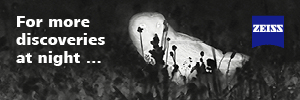| This article is incomplete. This article is missing one or more sections. You can help the BirdForum Opus by expanding it. |
Overview
The expression exposed to the elements has never been more true than of the Cap de Creus (the last glimpse of the Pyrenees before they plunge into the mediterranean) as the effects of wind, fire and water are clearly visible for all to see.
They shape everything. From the oddly-formed plants and trees sculptured by the hands of the tramuntana, or northwind, to the jagged cliffs and islands honed by the relentless action of the ocean.
And then there's the birdlife.
Birds
Notable Species
Any place that juts into the sea as if striving to justify the title 'most easterly point of Spain', is clearly going to be a good spot for seabirds, particularly if the llevante, or eastwind, is blowing them coastbound.
And, at the right time of year, you can actually put down your binoculars and revel at the sight of Cory's Shearwater, Balearic Shearwater and Yelkouan Shearwater all floating on a cushion of air just a few metres below you.
That same wind of course carries through migrating Kites, Eagles and Honey Buzzard, all of which also depend on its power, like the resident Bonelli's Eagle, for hunting. Migrant passerines too, have reason to be grateful for its assistance but, if it turns to tramuntana, they seek shelter from its cold bite in the patches of cork oak, a tree surviving on the Cap in part due to its resistence to fire.
This third element is mainly induced by man as farmers, perhaps rashly, burn back tracts of land to try to preserve and expand grazing pasture. Once done though it provides habitat for Rock Bunting and Ortolan Bunting, Black Wheatear and Western Black-eared Wheatear, Wood Lark and Thekla Lark and the Tawny Pipit.
Warblers too capitalise on the regeneration process with Spectacled Warbler taking residence during the 'grassy with scattered bushes' phase, Dartford Warbler and Western Subalpine Warbler moving in when it turns to scrub and the Sardinian Warbler much later.
But perhaps for the final word we should return to water who's intricate rock carvings in ages past and present have provided homes for Wallcreeper, Alpine Accentor, Pallid Swift and Alpine Swift and both the Rufous-tailed Rock Thrush and Blue Rock Thrush.
Rarities
To do
Check-list
Birds you can see here include:
To do
Other Wildlife
To do
Site Information
History and Use
To do
Areas of Interest
To do
Access and Facilities
To do
Contact Details
To do
External Links
For further info:
email me at [email protected] or check out www.catalanbirdtours.com
Content and images originally posted by Stephen C
Reviews
Stephen C's review Its worth going here just for the incredible views of shearwaters and other sea birds.
It also has to offer rock and mountain species such as pallid swift, blue/rock thrushes, wheatears, tawny pipit, etc. and is great, especially in autumn, for raptors.
Routes are clearly marked out and even going off-route is o.k. as the lighthouse acts as a useful beacon. Take boots, a packed lunch and eat it in one of the stunning calas (cove beaches). Pros
- remote
- unique and breath-taking
Cons
- for some: a bit of a drive up winding mountain roads



